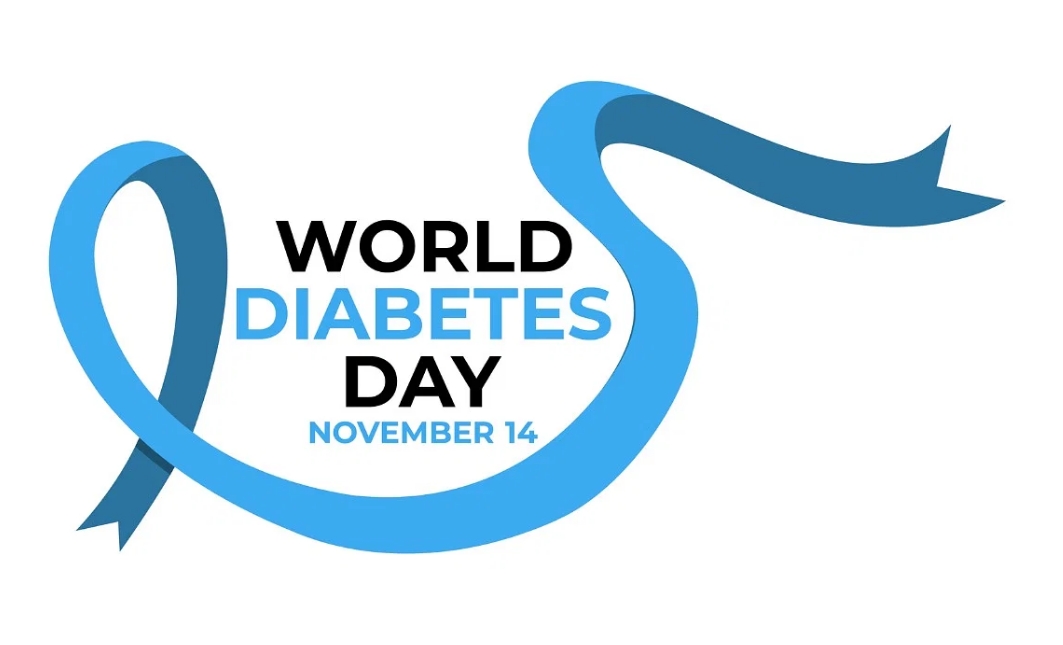What’s Propelling mRNA Therapies Today?
31 December 2023 | Opinion | By Ruplekha Choudhurie, Team Lead/Senior Industry Analyst, TechVision Practice, Frost & Sullivan
Over the next three to five years, it is anticipated that the portfolio of mRNA treatments and vaccines will grow significantly due to the potential that mRNA has across indications. Asian biotech businesses have also stepped up and are aggressively pursuing in-house R&D and working with companies to enrich their mRNA pipelines. However, the US and Europe will continue to be the centres of mRNA R&D and product development. Let's explore the mRNA therapeutics world.

The commercialisation of the first mRNA vaccine for COVID-19 in 2021 was a turning point in the journey of this four decade long researched area. The success of mRNA vaccines has bolstered a wave of innovations and accelerated pipelines around this platform technology. In the last two years, mRNA therapy developers have received tremendous attention from the research community, federal funding agencies, VC firms and biopharma companies, which invested heavily in this segment. Many pharma companies realigned their portfolios to prioritise mRNA R&D.
mRNA is a versatile platform and its obvious advantages include flexibility, safety, rapid design and manufacture, and modularity when compared to other modalities, such as DNA, cell-based vaccines, viral vector vaccines and recombinantly expressed proteins.
The industry waging forward to develop solutions that could enable widespread adoption across multiple indications, and along with key global mRNA companies such as Moderna, CureVac and BioNTech, Asian counterparts Gennova, Abogen Biosciences, Stemirna Therapeutics, mCureX are also pursuing to develop a mRNA vaccine and therapeutic portfolio.
Tremendous Potential
Being a broadly applicable platform, mRNA is a promising therapeutic strategy, and has a much broader potential beyond just being used as a prophylactic vaccination strategy for infectious diseases. The other key applications of IVT mRNA are personalised cancer vaccines, engineered cellular immunotherapies (CAR-T), protein replacement, and expression of gene editing tools in rare diseases, cardiovascular disease, cancer, autoimmune disease among others.
mRNA-based therapy is also garnering traction due to its potential advantages over traditional biologics and gene therapy. They can mitigate the challenges with recombinantly expressed proteins therapeutics and can also be used to encode multiple proteins for immunogens consisting multiple subunits simultaneously. Production and manufacture of mRNA is rapid, flexible, convenient, simple, and less expensive than recombinantly expressed proteins and viral vectors.
Since mRNA does not enter the nucleus and its expression is transient, there is no risk of long-term exposure to antigen or mutagenesis as there is with gene therapy. mRNA by nature is immunogenic, giving rise to both innate and humoral immunity making it an ideal choice for vaccines. However, for successful translation in other therapeutic indications mRNA needs to be modified to reduce the reactogenicity.
Companies such as Moderna, CureVac, Translate Bio (acquired by Sanofi), Ethris GmbH had been investing in mRNA cancer vaccines, infectious disease vaccines and mRNA-based protein replacement therapies for multiple therapeutic indications for several years now. The mRNA COVID-19 vaccine approval only rekindled R&D activity and faith to pursue this platform, and several late-stage candidates are now progressing rapidly.
Even within infectious diseases, mRNA vaccine developers had a diverse pipeline of candidates for other diseases including RSV, Influenza, Zika, HSV, HIV, Nipah, MPV and other viruses before the development of the vaccine against the SARS-Co-V2 and other variants. Since it is a plug and play technology, it is very amenable to modifications, and designing a new mRNA vaccine for emerging variants/mutants is quicker compared to cell-based vaccine or viral vectored vaccines. This makes it an ideal choice for developing universal flu vaccines and multivalent mRNA to tackle emerging variants of COVID-19, and other infectious diseases.
Next generation RNA vaccines using newer forms of RNA such as saRNA (self-amplifying RNA), trans amplifying RNA, and circular RNA, can be potentially safer, stable and require lower dosing than conventional mRNA. Additionally, shelf stable mRNA vaccines, and alternate delivery routes such as inhalable formulations, oral delivery and needle free patches will fuel adoption and subsequent market growth.
Bottlenecks
While there are certain roadblocks around delivery, stability, and immunogenicity/reactogenicity, recent developments focused on novel delivery technologies, sequence design, AI and advanced forms of mRNA are enabling development of next generation mRNA therapeutics and vaccines. Using saRNA and circRNA could mitigate the stability and sustained expression challenges.
Along with the stability challenges of mRNA, high reactogenicity of synthetic mRNA might lead to undesirable inflammatory reactions, resulting in adverse side effects. Traditional LNPs that are used to deliver mRNA cargo could result in inflammatory responses, and alternatives such as polymeric nanoparticles and exosomes are being explored to deliver mRNA for cellular immunity mediated cancer immunotherapy.
Targeting mRNA to tumours and organs beyond the liver remains challenging and can lead to adverse effects and systemic toxicity. Ethris and Translate Bio focus on inhalable mRNA therapeutics for pulmonary diseases has garnered much traction in recent years. In December 2022, Indian pharma company Cipla entered into a strategic collaboration with Ethris GmbH and invested 15 million Euros to expand Ethris’ portfolio and make those mRNA therapies accessible to developing nations.
A Potential Immunotherapy Strategy
Immuno-oncology remains a complex and much researched area, and a “significant” impact of mRNA is expected to be realised in the field of cancer immunotherapy. mRNA-based cancer vaccines can have both prophylactic and therapeutic effects, and several vaccines are in clinical development for solid tumours. Recently, Moderna entered a partnership with Merck to advance phase 3 trials for Moderna’s mRNA cancer vaccine mRNA-4157 for melanoma.
At present, there are several mRNA vaccines in clinical trials using multiple tumour specific antigens (TSAs), tumour associated antigens (TAAs) and cytokines as immunologic stimulants. Compared with TAAs, TSAs (especially neoantigens) are more specific and enable better targeting to tumour cells. Personalised cancer vaccines targeting multiple tumour neoantigens are being developed. BioNTech and Moderna’s personalised mRNA vaccines have shown promising anti-tumour effects in clinical trials, while CureVac recently began dosing in its Phase 1 trials for mRNA cancer vaccine for glioblastoma. China’s Stemirna is also developing mRNA-based personalised cancer vaccines, along with its pipeline of infectious disease prophylactic vaccines. mRNA is also being explored to develop a universal cancer vaccine with companies such as CancerVax, US working with UCLA to develop one.
Circular RNA (circRNA) is a rapidly growing area of research within RNA therapeutics and vaccines space and has shown promise with better stability and protein expression that its linear mRNA counterpart. circRNA focused companies secured large VC funding in the last two years, with several company launches and collaborations. Circularisation of RNA can induce stable protein expression for long durations and players such as oRNA Therapeutics (US), Laronde (US), Circio, Norway, Circular Genomics, US and Therorna, China are exploring this type of RNA for cancer vaccines and other therapeutic applications.
For mRNA to be successful as targeted and safer therapies, companies such as Strand Bio and Kernal Therapeutics are leveraging synthetic gene circuits to develop logic gated mRNA immunotherapy that can be spatio-temporally controlled and expressed only in the tumour.
In Situ Production of CAR-T Cells, Gene Editing and Protein Replacement Therapy
While CAR-T therapy has emerged as a promising option for several types of cancer, it usually requires ex vivo engineering of T cells using viral vectors, which induces persistent expression of CARs and is associated with serious side effects. mRNA mediated CAR-T engineering is being developed (oRNA Therapeutics) to overcome these challenges. Since they can engineer the T cells in situ, without the need to remove them from the body, it would be safer, but also simpler and cheaper as CAR-T manufacturing is complex and expensive. China/US dual headquartered Simnova partnered with oRNA Therapeutics in January 2023 to leverage its in situ CAR (is CAR) and lead clinical development and commercialisation across all oncology indications in Greater China.
mRNA also finds tremendous application in protein replacement therapy which conventionally uses exogenously expressed proteins or gene therapy, to replace or correct the faulty protein. While the primary focus of such therapies would be towards monogenic diseases, other conditions such as cardiovascular diseases and neurological diseases could also benefit from mRNA-based protein replacement.
mRNA therapeutics to express growth factors (VEGF-A) is being developed by Moderna as a regenerative therapy for cardiovascular indications, while many candidates are in pipeline for production of therapeutic proteins for monogenic diseases. Phase ½ trial of Moderna’s mRNA-3927 for propionic acidemia (PA) is the first clinical trial of an mRNA therapeutic for intracellular protein replacement for this rare genetic disease. mRNA is being investigated to code enzymes such as nucleases, CRISPR, TALENs and others for gene editing applications.
A recent example is South Korean mRNA company mCureX Therapeutics (subsidiary of OliX Pharmaceuticals) partnership with the gene editing expert Toolgen in June 2022 to develop gene edited therapies for rare inherited ocular diseases. India based Aaarna Therapeutics has also forayed into the mRNA therapeutics space, and the company is developing mRNA expressing CRISPR-Cas to develop antiviral therapeutics and vaccines.
Considering the promise that mRNA holds across indications, the portfolio of mRNA therapeutics and vaccines is expected to expand rapidly over the next 3-5 years. While the US and Europe will remain the hubs of mRNA R&D and product development, Asian biotech companies have also geared up and are actively pursuing in-house R&D and collaborating with companies to enrich their mRNA pipelines.
Ruplekha Choudhurie, Team Lead/Senior Industry Analyst, TechVision Practice, Frost & Sullivan











